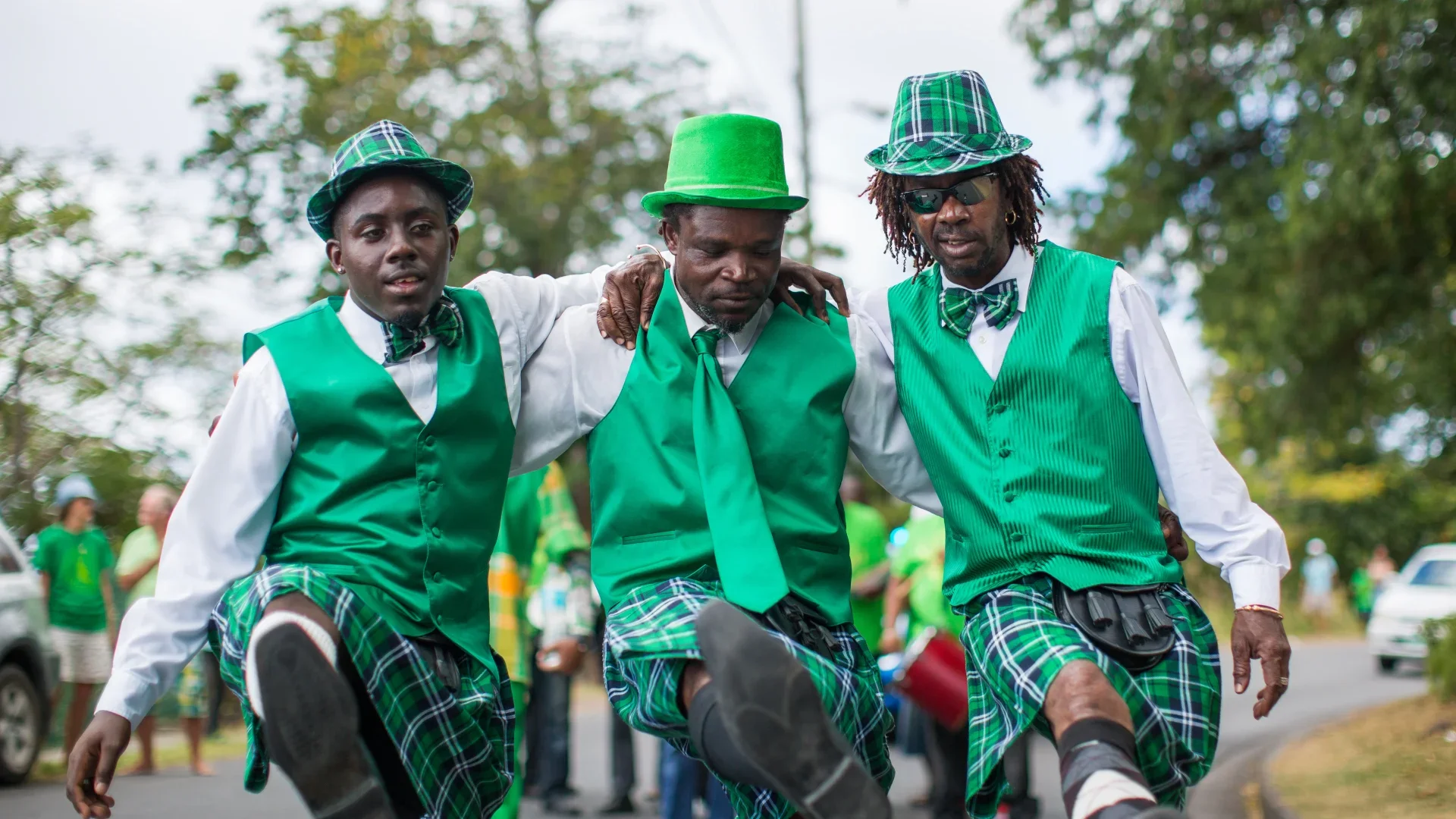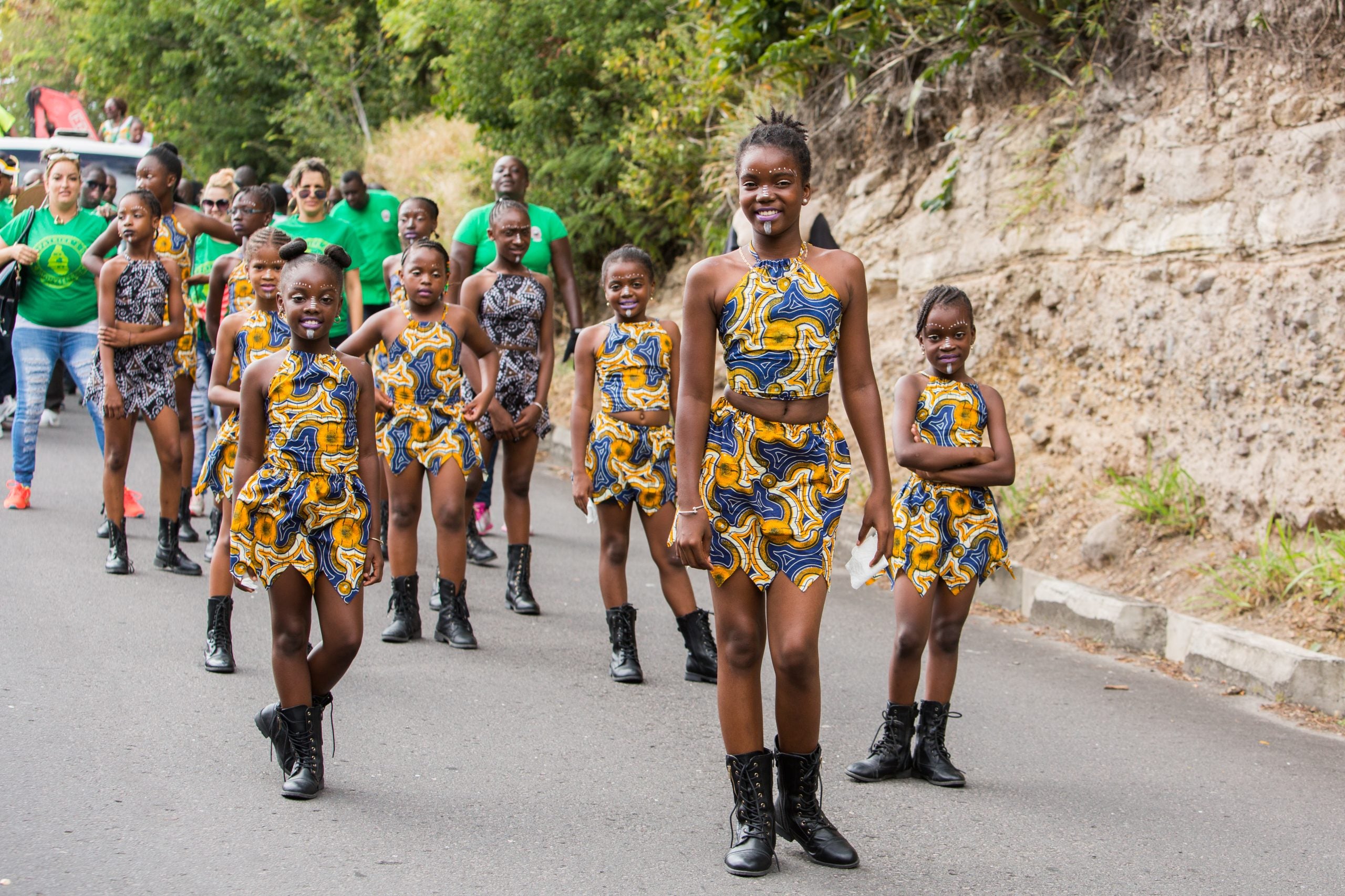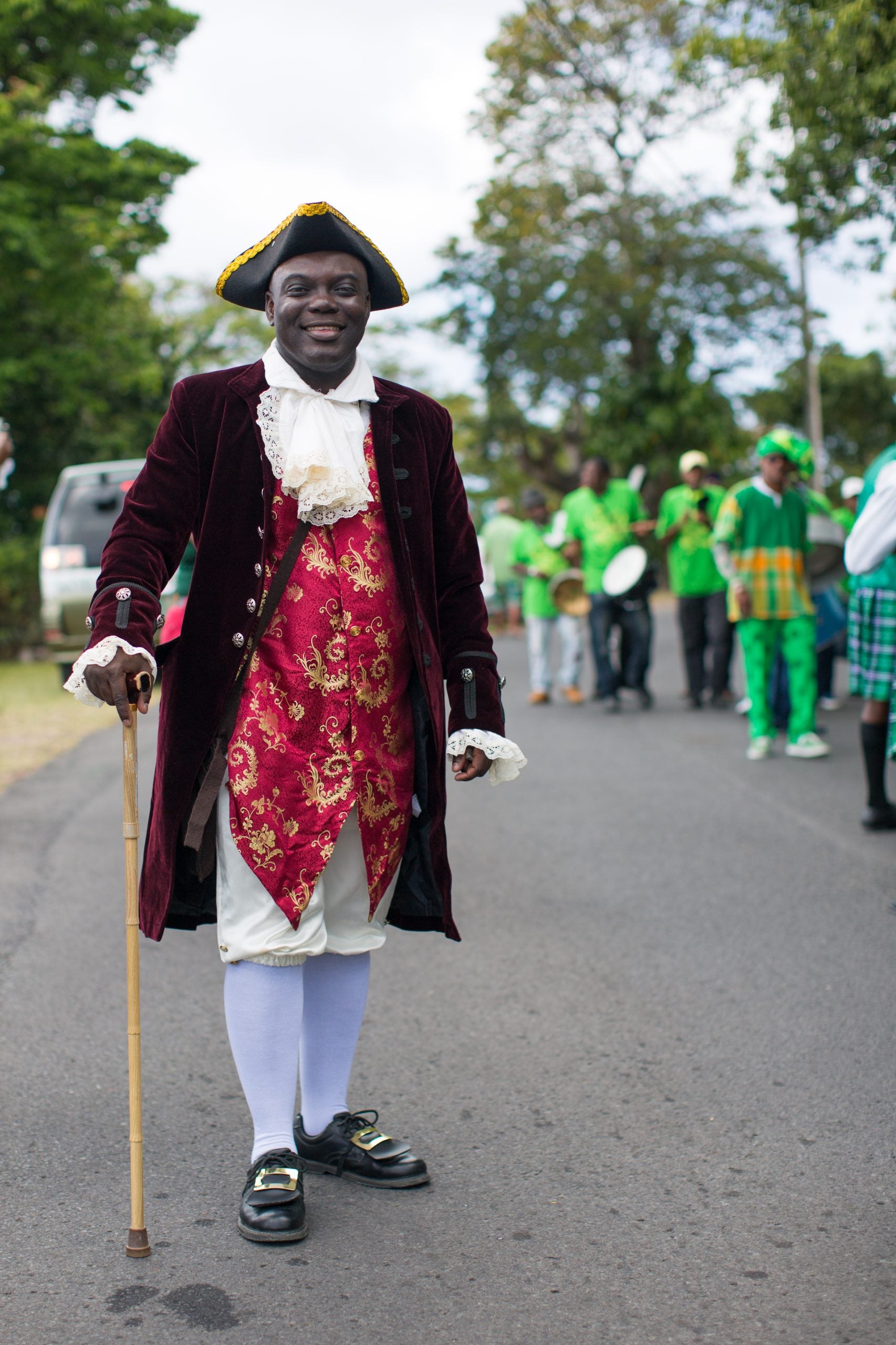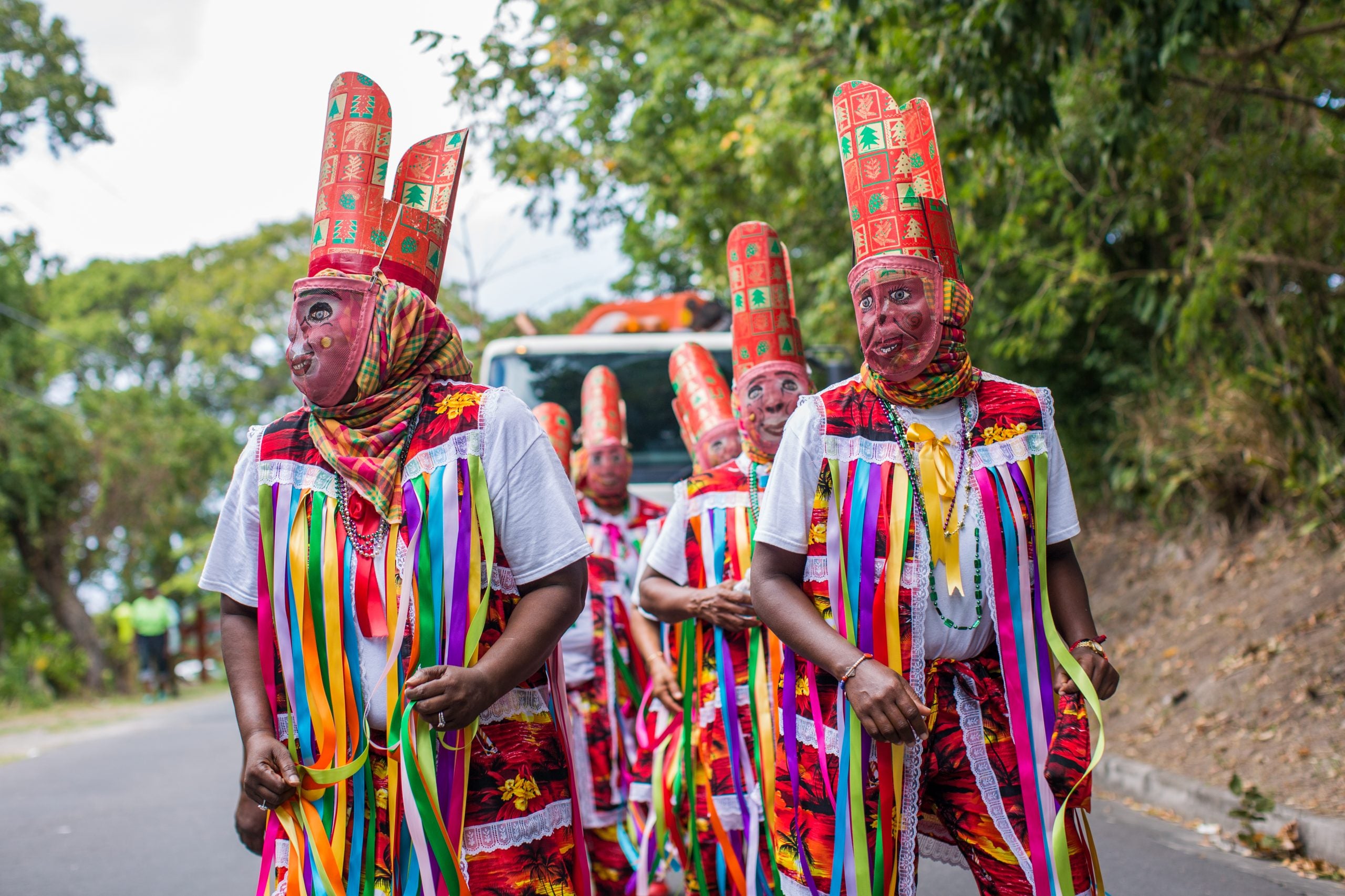
There is only one place outside of Ireland that celebrates St. Patrick’s Day as a national public holiday: the island of Montserrat. The small pear-shaped island is about 40 square miles and is located just south of Antigua. It’s known as the Emerald Isle of the Caribbean.
Montserrat hosts an annual 10-day celebration leading up to the holiday on March 17th, known as the St. Patrick’s Festival. Past highlights have included early morning street jams, music concerts featuring some of the biggest names in reggae and soca music, all-white parties, and a unique St. Patrick’s Day parade with African influence and a Caribbean twist.
During my visits, I learned about an island with a unique heritage and a complex history, as well as a one-of-a-kind festival that combines a legacy of resistance and a good dose of fun.
Now you may be wondering why a Black Caribbean island celebrates St. Patrick’s Day in such a big way. I had that same question when I visited. What I learned over the course of two visits is the story of an island with a unique heritage and a complex history, as well as a one-of-a-kind festival that combines a legacy of resistance and a good dose of fun.
A Unique Heritage
Many of the first Europeans who settled on the island in 1632 were Irish Catholics who came as indentured servants. The Africans who came to Montserrat were enslaved and worked on plantations. The customs and traditions of the two groups blended, and the African and Irish influences can be seen as you move across the island.
Montserrat has villages with Irish names like Cork Hill, St Patrick’s and Delvins, many people have Irish surnames such as O’Donoghue, Tuitt, Allen, Meade, and Sweeney. And you’ll even get a shamrock-shaped passport stamp when you go through customs at the airport or ferry terminal. The striking resemblance of its cliffs and shorelines and its historical ties to Ireland led to the island being fondly called the “Emerald Isle of the Caribbean.”

So Why Does Montserrat Celebrate St. Patrick’s Day?
On Montserrat, Saint Patrick’s Day became a national holiday in 1985, but it wasn’t to celebrate St. Patrick, the patron Saint of Ireland. The annual festival commemorates the enslaved Africans known as the freedom fighters who lost their lives after their planned Saint Patrick’s day rebellion set for March 17th, 1768, was discovered.
The people chose that day for the uprising because it is known to be the day that most enslavers would be drunk and distracted by the holiday. Plans for the rebellion were reportedly overheard by an Irish woman who revealed them to the British. Tragically nine of the rebellion’s leaders were put to death, while another 30 were detained before being exiled off the island.
Although the rebellion was unsuccessful, it marked a critical moment in the movement to abolish slavery in the Caribbean region. This was the first in a series of uprisings across the Caribbean that helped end slavery in the region, which ultimately came with the Slavery Abolition Act of 1833 across the British empire.

Why Is This Important?
The island’s celebration of St. Patrick’s Day is two-fold. It acknowledges the influence of the Irish on Montserrat and offers an opportunity to reflect on the sacrifices made in the fight for freedom by our African ancestors.
The Silk Cotton Tree, where a runaway enslaved man named Cudjoe was beheaded and hanged to deter others from fleeing, is where the lighting of the flame ceremony takes place annually to mark the festival’s opening. The 10-day experience concludes with a heritage feast that features dishes such as the hearty meat stew known as Goat Water, Montserrat’s national dish.

One thing that will always stand out to me is seeing the mixture of Ankara prints, Afro madras cloths, and people dressed up as abolitionists, such as Olaudah Equiano, amid leprechaun hats and T-shirts. It’s a nuanced St. Patrick’s Day celebration unlike any other I have ever experienced because it is really about honoring the memory of those freedom fighters. Black people, people of African descent, and their role in ending slavery on the island and beyond.
